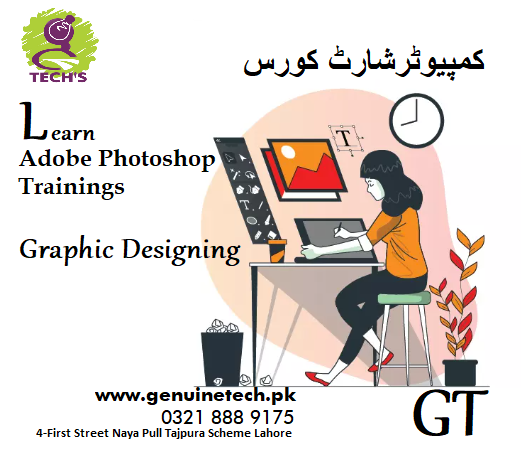Graphic Design Course Outline - Shan College
What is included in graphic design course? - Shan
Learn the best Graphic Design Course designed for beginners and professional to enhance their skills and knowledge in graphic designing and unlock more career opportunities for yourself in this graphic designer course you can learn to create attractive images, poster, banners using the graphic design software tools and become expert full stack graphic designer so avail the opportunity of learning this best graphic designing course in which you can learn;
- Introduction to Graphic Design
- Adobe Photoshop
- Adobe Illustrator
- Adobe InDesign
- Branding and Identity Design
- Web Designing
- Logo Making
- Design Theory and coloring scheme
- Types of Graphics and Design
Genuine Tech is one of the Top Computer Training Institute in world here you can learn the best computer courses individually and become expert in your profession. Students can create basics of graphic design and software tools for designing which may include Adobe Photoshop and InDesign etc. You can learn all of these and after this course you can learn web development course, digital media marketing course for enhancing your skills and there are many career opportunities for full stack developers in all over the world.
Professional Graphic Design Training & Certificate
Genuine Tech is the best learning hub for graphics and design courses online and physically here the experts can design this professional graphic design training & Certificate course topics for candidates so they can become professional graphic designer and enhance their skills after covering all topics in this designing course we may add freelancing training as well for the candidate who want to become independent and start their own work at home or at any place this may result they can earn money online and secure their future by working any where in the world.
You can visit befunky.com here you can get the free graphic design tool.


If you want to get further details and update about computer trainings course don't hesitate direct whatsApp chat, call or visit and follow Facebook page, Instagram and get more information LinkedIn accounts
